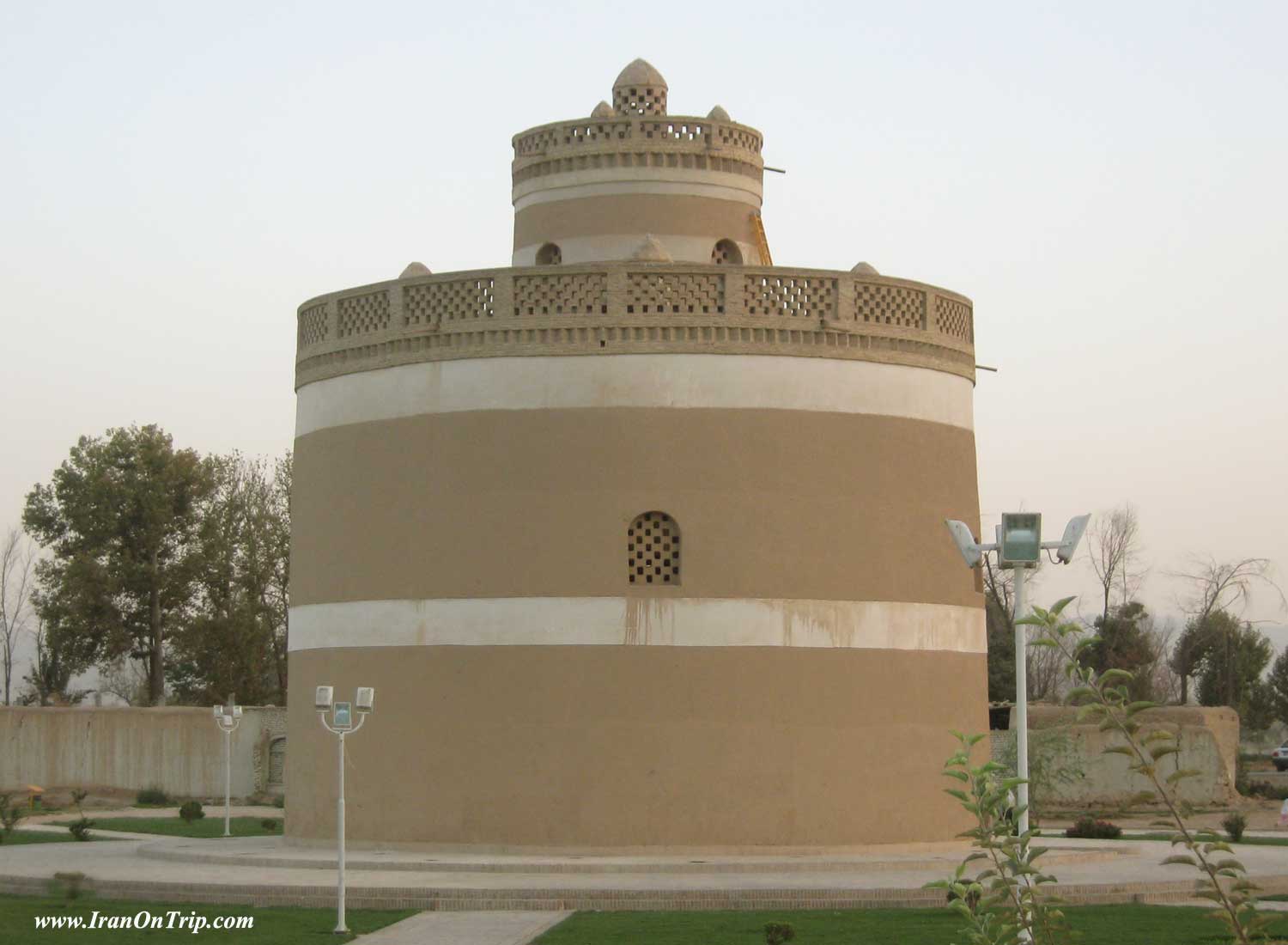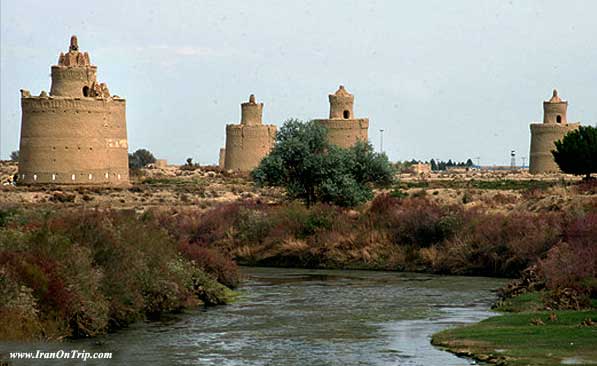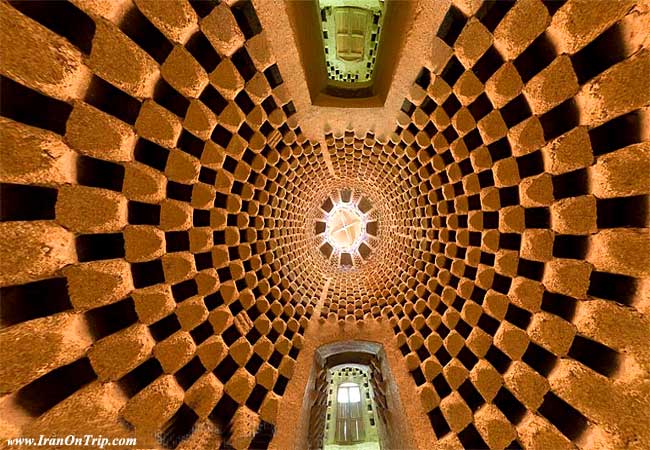Isfahan Pigeon towers

Pigeon towers represent one of the most remarkable examples of eccentricity in Iranian architecture. They are found in vast numbers round Isfahan and date from the time of the Safavids who seem to have had a particular liking for melons. Chardin was sufficiently intrigued by them to include drawings of several different types, and was astonished by the number of melons consumed. During the main season, he writes:
[The poorer sort of People] ... live upon nothing else but Melons and Cucumbers ... There are some that will eat five and thirty Pounds of Melon at a Meal, without making themselves Sick. During these four Months, they come in such vast Quantities to Ispahan, that I can't help believing they eat more here in a Day, than they do in France in a Month.

Pigeon dung was thought to be the best manure for these crops, and the pigeon towers were built to attract pigeons to them so that they would nest in the top and their dung would fall to the bottom. Chardin continues.I don't think there are any finer Dove-Cots in any part of the world ... they are built with Brick overlaid with Plaister and Lime, full within of Holes for the Pigeons to breed in ... They reckon above three thousand Pidgeon-Houses about Ispahan, all built for the sake of the Dung ... They call it "Tehalgus". It is sold a "bisti" or Four-pence, the Twelve-Pound Weight on which the King lays a small Tax.After the fall of the Safavids, the requirement for melons seems to have declined and with it the demand for pigeon dung, although in 1809 it was reported that the average revenue from a Pigeon Tower was 100 tomams (about £10), and this may account for the high level of expenditure devoted to their designs and upkeep.It is doubtful whether the pigeons were ever bred for eating, as the pigeon is especially revered in Islam as a friend of the Prophet. The pigeons were in any case the Persian wild pigeon which is a cindery blue. The white pigeon being regarded as a sign of bad luck.The Pigeon towers illustrated above are from a group below the atashgah or Zoroastrian Fire Temple. There are many more on the way to the airport and also several in the countryside to the East of the city. There is even a roundabout in Isfahan with one in the centre. Note the diversity in construction of the towers and also the unusual decoration with red rendering. Birds are normally put off by the colour red and it is strange that this colour was found to be suitable.Like many other ancient artistic structures, pigeon towers have for the most part remained neglected and unknown to the average Iranian. This comes in spite of their utilization for agricultural purposes and widespread distribution throughout the country spanning across the shores of Urumieh Lake in the Northwest, the deserts of Yazd , villages in Kashan and southern parts of Khorasan. In Isfahan alone there are close to 3,000 pigeon towers while Meybod in Yazd province is home to one of the most exquisite pigeon towers in the country.The architectural design of such towers in unique in a way that not only do they provide onlookers with an artistically crafted structure to view, but also attract pigeons and provide a safe environment for them to nest and live in. Considering the many animals that prey on pigeons, such towers act as an impenetrable fortress that shelters the pigeons from predators. The design of the towers and specifically the size of the entrances is such that birds such as hawks, owls or crows are unable to enter the towers which on average can house up to 25,000 pigeons. The engineering of the structure has even accordingly taken into account the vibrations created as a result of the simultaneous rise and flight of this many pigeons. To combat the effects of such vibrations, there is normally a floor towards the center of the tower and also arches connecting the interior and exterior cylindrical perimeters.The interior consists of endless nesting balconies scattered uniformly along the straw and clay walls. During the summers light breezes flow through the inside and maintain a cool temperature while during the winter the interior remains relatively warmer than the outside environment.

Aside from providing a sight seeing attraction to tourists and a home to pigeons, the towers also have economic benefits as they are used to produce and collect some of the most desirable natural fertilizer. Prior to the popularization of chemical fertilizers, pigeon droppings from such towers were almost used exclusively. In Yazd the Meybod Pigeon Tower was constructed during the Qajar era. It stands 3 stories tall and is home to thousands of pigeons. The Tower is cylindrical with ridged stucco and brick placements decorating the walls not only adding to the beauty of the Tower, but also preventing snakes from sliding up the surface and gaining entry. The thick adobe crust consists of six interior chambers with a tiny entrance on the west side and two flights of stairs. The biggest drawback about the Tower is its location as a police station is directly across from it. Given the limitations of photography at military locations, taking souvenir photos at the Meybod Pigeon Tower can at times be challenging.
.....
.....
.....

.jpg)



























